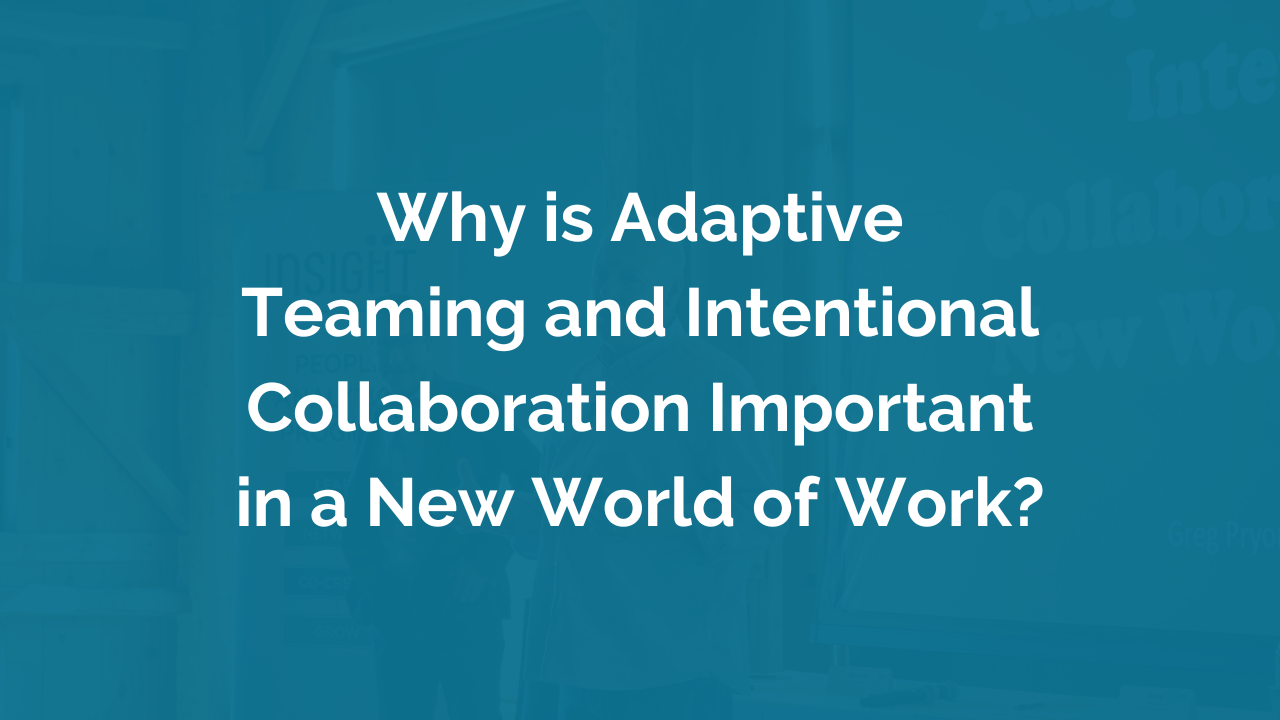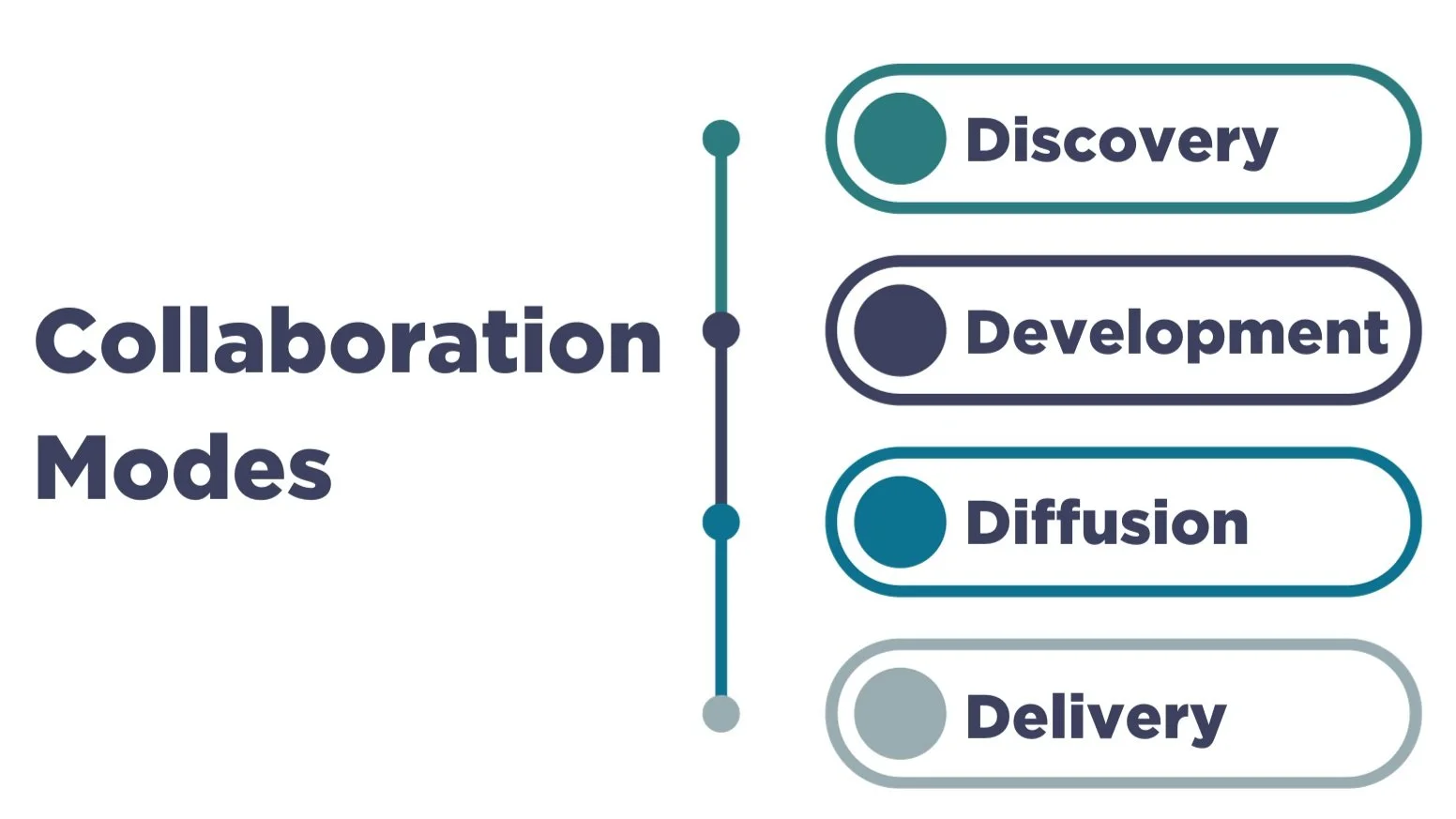Why is Adaptive Teaming and Intentional Collaboration Important in a New World of Work?
In today's fast-paced and ever-evolving world of work, the importance of connections, collaboration, and teamwork cannot be overstated. The way we work has undergone a huge shift, driven by factors such as the COVID-19 pandemic and the rapid advancement of technology. As organisations adapt to these changes, the need for effective collaboration and intentional teamwork has become more critical than ever.
In this blog, we will delve into the significance of connections in the realm of people analytics and HR. We'll explore the dangers of neglecting this aspect, drawing insights from a recent session at the Insight222 Global Executive Retreat (GER), where industry experts Michael Arena and Greg Pryor shed light on this very topic. Throughout this article, we will review some of the key takeaways from their enlightening session.
The Danger of Neglecting Connections
Michael Arena and Greg Pryor presenting at the Insight222 Global Executive Retreat (GER) 2023. The GER is part of the Insight222 People Analytics Program®
Before we dive into the insights from the GER session, it's essential to understand the risks associated with neglecting the power of connections in the workplace. Connections, or the lack thereof, can significantly impact an organisation's productivity and innovation.
In the pre-pandemic era, we often took connections for granted. We sat in offices, interacted with colleagues, and built relationships without much thought. However, the pandemic disrupted this norm, forcing many into remote work setups. The sudden shift led to a dramatic change in the way we connected and collaborated.
One of the dangers that emerged was the decline of "bridging relationships." These are the connections that bring new ideas and perspectives to the table. When the pandemic hit, many organisations saw a sharp decrease in these relationships, hindering their ability to innovate.
For instance, Microsoft's report, "The Next Gen Disruption is Hybrid Work - Are We Ready?" highlights this phenomenon. While bonding relationships, characterised by social cohesion within a group, thrived during the pandemic, bridging relationships suffered. As a result, organisations found themselves spending valuable time re-establishing these connections.
The Significance of Intentional Collaboration
Michael and Greg emphasised that being intentional about collaboration is the key to productivity in the new world of work. They pointed out that platitudes and attitudes alone won't suffice. Instead, organisations must adopt a more deliberate approach to collaboration.
One of the concepts discussed was the "neighbourhood effect." During the pandemic, many of us became siloed in our work, losing connectivity with colleagues. Bridging connections plummeted by 30% in the first three months of the pandemic, highlighting the need for intentionality.
Innovation, a basis of organisational long term success, came into question. The shift to remote work gave rise to what Michael and Greg referred to as the "activity avalanche." This avalanche included a surge in meetings, new enterprise resource planning (ERP) systems, and strategic initiatives. Consequently, people were overwhelmed, and leaders found themselves generating a significant portion of these meetings.
To tackle these challenges, Michael and Greg advocated for an adaptive approach to collaboration. They stressed that one-size-fits-all solutions, such as mandating a return to the office, no longer suffice. Different teams have different work cycles and velocities, making adaptability crucial.
The Role of Collaboration Modes
The session also shed light on different collaboration modes, emphasising that when someone says, "We need to collaborate more," it's essential to specify what kind of collaboration is needed. The following collaboration modes were discussed:
Discovery: This involves bridging interactions that trigger novel ideas and new insights. It's about pushing boundaries and challenging each other, which is crucial for innovation.
Development: This mode focuses on local "bonding" interactions within cohesive teams. It facilitates idea elaboration and refinement, which is crucial for turning concepts into actionable plans.
Diffusion: Bridging interactions in this mode aims to move concepts across the broader organisation, enabling scaling. It's about ensuring that innovative ideas reach a wider audience.
Delivery: In this mode, bonding interactions are used to operationalise proven products and solutions for delivery. It's about executing and ensuring that the work gets done effectively.
Understanding these collaboration modes allows organisations to be more specific and intentional about where and how they collaborate. It's about putting the right people in the right modes to drive productivity and innovation.
The Contagious Nature of Energy
Another crucial insight from the GER session was the contagious nature of energy within an organisation. Energy, in this context, refers to the enthusiasm, motivation, and positivity that individuals bring to their work.
The research presented showed that organisations with a 3:1 ratio of energising connections to de-energising ones tend to thrive. Identifying influential energisers early for new hires and within teams can be a game-changer for productivity and innovation. Not only that, but leaders who are most satisfied with their careers often have between 35% and 45% more energising connections in their network.
Moreover, the session highlighted that behaviours within an organisation are contagious to three degrees of separation. This means that you can influence not only your immediate connections but also their connections' connections. Therefore, your actions and behaviours have a far-reaching impact on your corporate culture and performance.
Additional Insights:
Michael and Greg provided a wealth of additional insights that further enhance our understanding of collaboration in the modern workplace:
The Power of Face-to-Face: Social capital is essential for influence, and as much as 70-80% of our ability to influence stems from face-to-face exchanges. Finding ways to establish face-to-face connections, even with hybrid working or remote workers, can significantly impact collaboration and productivity.
Cultivating Culture: Culture is not evenly distributed but rests in pockets within the network. Certain behaviours are caught and taught, and employees shape each other's experience. Understanding these cultural clusters and their influence on organisational behaviour can help organisations drive desired cultural changes.
Balancing Collaboration Modes: Learning organisations balance their time across all three dimensions (discovery, development/delivery, and diffusion) for long-term future success and short-term results. They can generate 25% more insights, increase speed by 10x, and scale solutions 3x more effectively.
So, what steps can people analytics professionals take to gain a deeper understanding of collaboration within their organisations and make a real impact on the way teams work together in this changing landscape?
Figure 15. Source: Insight222 2022 People Analytics Trends
Measure Relationship Quality: Begin by measuring the quality of relationships within the organisation. Use surveys, feedback mechanisms, collaboration tools or organisational network analysis (ONA) tools to assess the strength of bonding and bridging relationships. Understand how these relationships impact team performance and innovation.
Analyse Network Data: Utilise organisational network analysis (ONA) to analyse the network structures within your organisation. ONA can help identify key influencers, connectors, and potential bottlenecks in information flow. By visualising these networks, you can gain insights into collaboration patterns. Our Insight222 2022 People Analytics Trends report reveals how people analytics teams increasingly use ONA and collaboration analytics to understand real organisational networks and employee influence. In our survey, 48% of companies now employ these technologies, up from 39% in 2021 (see Figure 15).
Identify Collaboration Modes: Categorise collaboration activities into different modes such as discovery, development, diffusion, and delivery. Use data to determine which modes are prevalent in different teams or projects. This can help tailor collaboration strategies to specific needs.
Assess Energy Levels: Measure the energy levels within your organisation's network. Identify energisers and de-energisers to understand their impact on collaboration and productivity. Assess the overall network energy to gauge its health and potential for innovation.
Track Innovation Metrics: Develop specific metrics to track innovation. While innovation is challenging to measure directly, you can assess factors like the number of new ideas generated, successful project implementations, or the speed at which innovations are adopted.
Assess Collaboration Effectiveness: Measure the effectiveness of collaboration efforts by tracking project outcomes, time to completion, and quality of deliverables. Analyse how different collaboration modes contribute to project success.
Map Serendipitous Connections: Use data to identify serendipitous connections within your organisation. Track instances where employees from different teams or departments have unplanned interactions that lead to innovative ideas or solutions.
Implement Surveys and Feedback Loops: Continuously monitor the organisation's culture and behavioural changes related to collaboration. Regularly gather feedback from employees regarding their collaboration experiences. Understand their pain points, preferences, and suggestions for improvement. Use this data to refine collaboration strategies.
Experiment with Collaboration Interventions: Design and implement experiments or interventions to enhance collaboration. For example, you can organise cross-functional workshops, virtual hackathons, or mentoring programs to stimulate innovation and collaboration.
Benchmark Against Industry Standards: Compare your organisation's collaboration practices and outcomes to industry benchmarks. Identify areas where you excel and areas that require improvement. Benchmarking can provide valuable insights into best practices.
By following these steps and leveraging data-driven insights, people analytics professionals can gain a deeper understanding of collaboration within their organisations. This knowledge enables HR and business leaders to make informed decisions, optimise collaboration practices, and ultimately drive business value in the ever-evolving world of work. Bottom of Form
Unlocking Organisational Success: Embracing Connections, Collaboration, and Teamwork in the Modern Workplace
The Global Executive Retreat session led by Michael and Greg provided valuable insights into the importance of connections, collaboration, and teamwork in the modern workplace. Considering these aspects can lead to a improvement in innovation, productivity, and overall organisational success.
Intentional collaboration, understanding different collaboration modes, and recognising the contagious nature of energy are all key factors in unlocking the potential of connections within an organisation. As the world of work continues to evolve, it's imperative for HR and people analytics professionals to adapt and embrace these principles to elevate the HR profession and drive business value.
ABOUT THE AUTHOR
Jasdeep Kareer
Jasdeep joined Insight222 in 2023 as a member of the products and services team. She brings a wealth of experience in data science, analytics, and client delivery having worked across a wide variety of industry sectors. After working for three years in Dubai, Jasdeep returned to the UK in 2019 where she established and led the People Science team at GE. She went on to develop an analytics client facing function within the analytics business at Workday. Jasdeep holds a Ph.D. in Applied Statistics from the University of Cambridge, and a Master’s in Mathematics & Statistics from The University of Sheffield. In her free time, Jasdeep enjoys travelling, dancing, trying different cuisines from around the world and following Formula 1.
Unlock the Power of People Analytics with Insight222
Are you ready to take your people analytics initiatives to the next level? The Insight222 People Analytics Program® is your gateway to a world of knowledge, networking, and growth. Developed exclusively for people analytics leaders and their teams, our program equips you with the tools, insights, and connections you need to thrive. As the landscape of people analytics becomes increasingly complex, with data, technology, and ethical considerations at the forefront, our program brings together over one hundred peer organisations to collectively address these challenges through our Global Executive Retreat, Peer Meetings, and many events and resources. Join us and be part of a community committed to driving tangible business success through data-driven insights.






